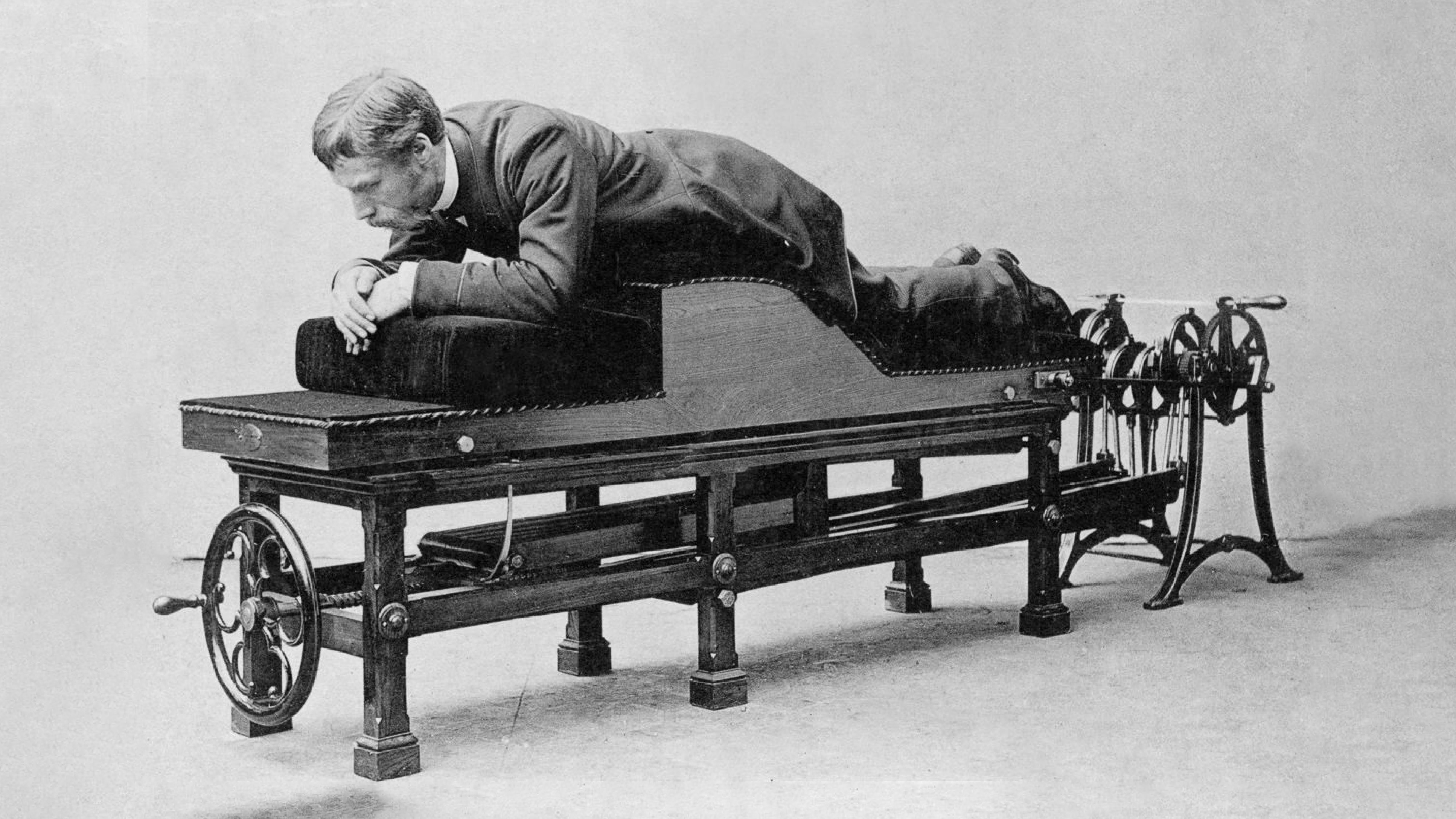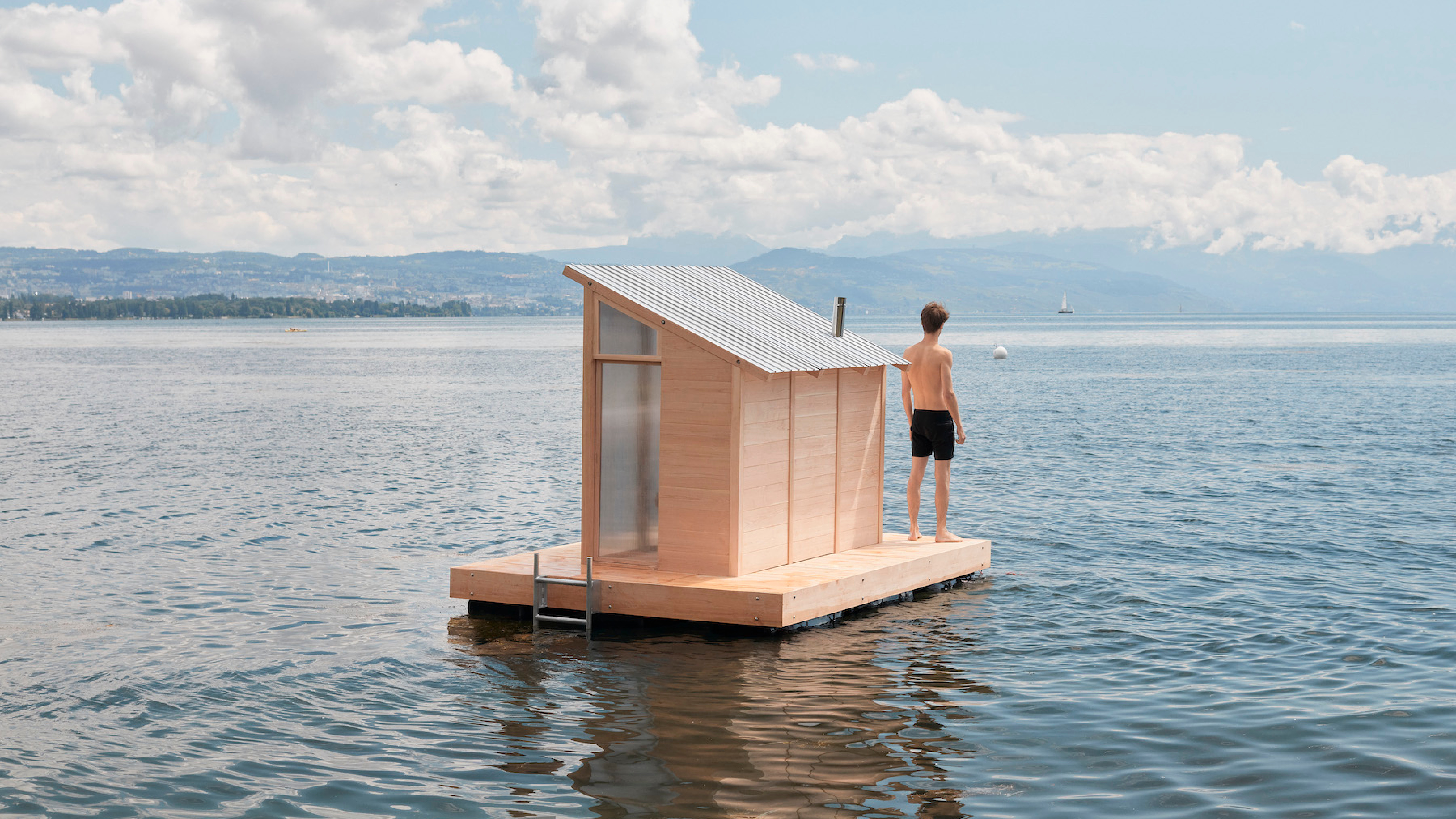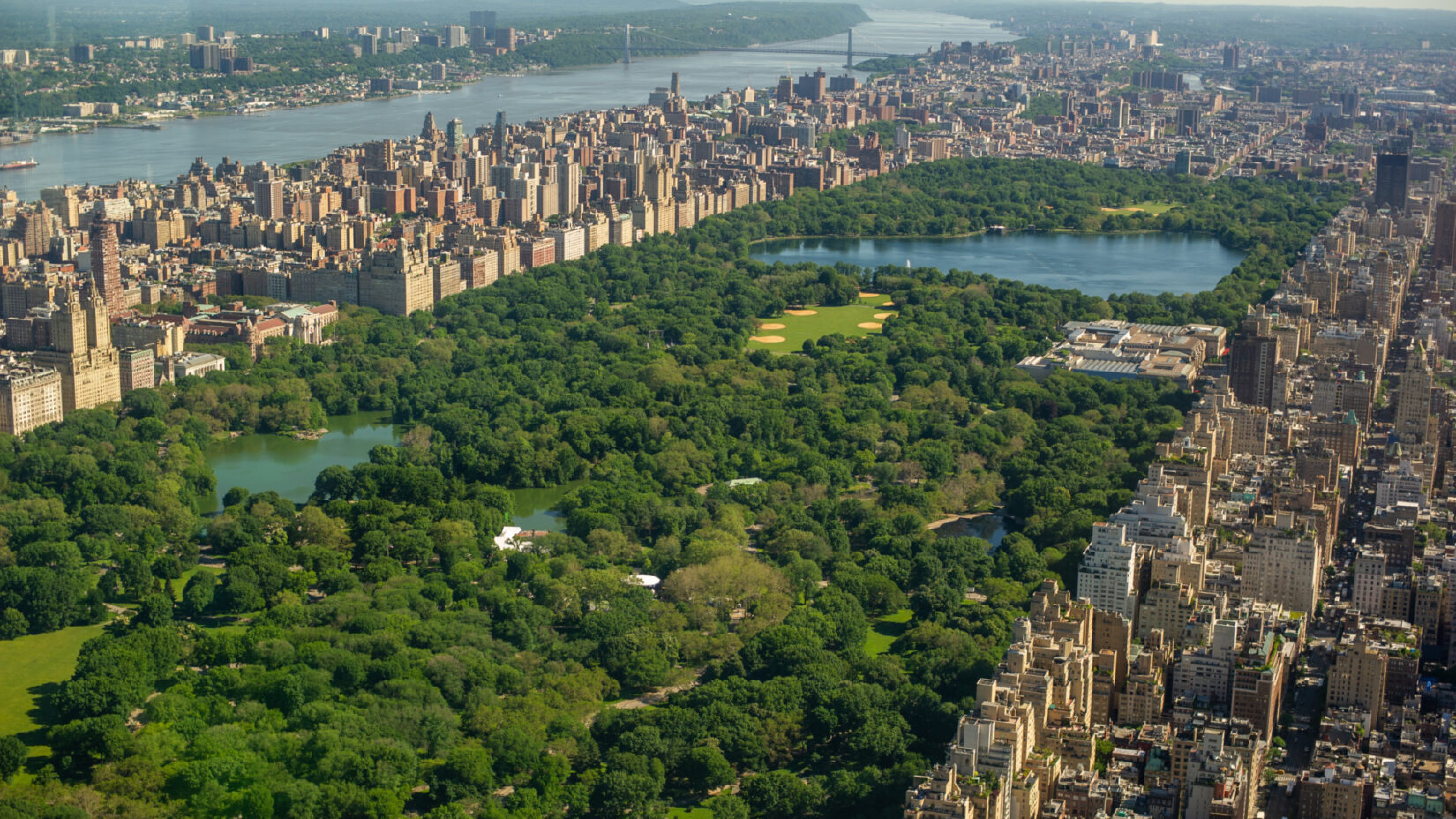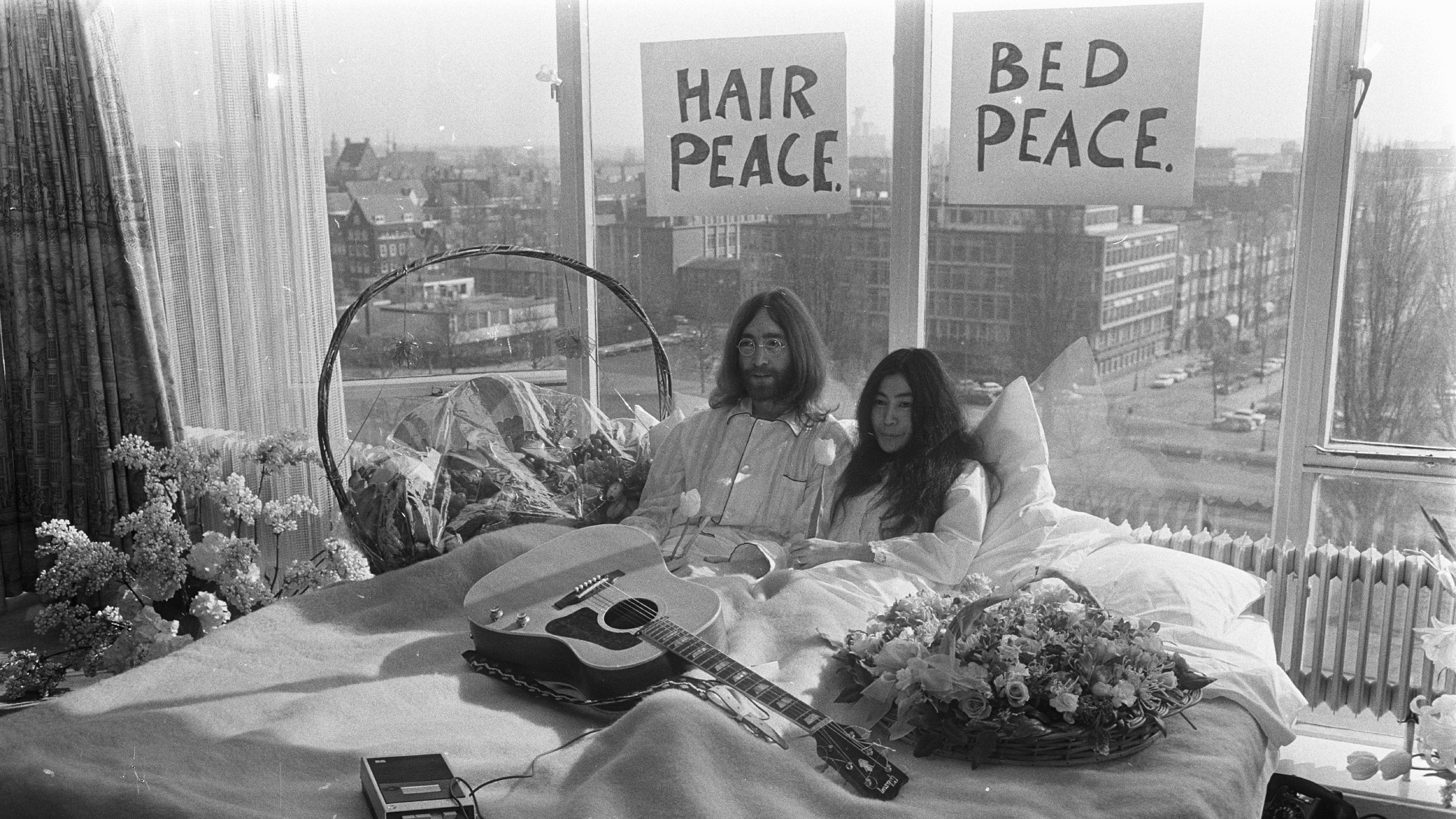Spaces is an exercise in curiosity about communal living and domestic activity. Each week we’ll select a Nation amenity and explore some of our other favourites from around the world, often drawn from fiction and throughout time.
Inspired by the announcement of our forthcoming ONE PLAYGROUND venue and in celebration of our very own resident workout rooms, we're taking a look at one of the only spaces where breaking into a sweat is actually a good thing. It's time to hit The Gym.
Gyms date back to around the 6th century BCE and were centres for both physical exercise and intellectual development, reflecting the Greek ideal of arete (excellence) in mind and body. The very first gym in recorded history is thought to be the “gymnasium” of Ancient Greece. The word gymnasium comes from the Greek word “gymnós,” meaning naked, as athletes typically exercised without clothing. These early gyms were used for athletic training (like wrestling, boxing, and running) and preparing for public competitions like the Olympics. They also hosted philosophical discussions and education. • Famous Locations: The most famous gymnasium in Athens was the Academy, where Plato taught. Other well-known gymnasiums were in Delphi, Olympia, and Thebes. These ancient gymnasiums set the foundation for both modern sports and education systems, but of course, they have taken on many different lives and meanings in the modern age.
.jpg?width=700&height=700&name=Original_muscle_beach%20(18).jpg)
muscle beach
Muscle Beach began in the 1930s in Santa Monica, California, as part of a public recreation initiative, attracting gymnasts, acrobats, and fitness enthusiasts. By the 1950s, it had moved to Venice Beach, becoming a legendary outdoor gym where bodybuilding pioneers like Arnold Schwarzenegger and Jack LaLanne trained. Its open-air setting and crowds made it both a performance space and a fitness hub, combining athleticism with a carnival-like atmosphere. It's a place full of wild stories, starting with the early days of Jack LaLanne, the “Godfather of Fitness.” In the 1930s, LaLanne was known for performing extreme feats of strength there, like swimming handcuffed while towing boats. His outlandish stunts drew massive crowds, helping to popularise Muscle Beach’s status as a fitness spectacle.
Muscle Beach shaped the rise of modern bodybuilding, blending fitness with spectacle. Today, it remains a tourist attraction and training ground, continuing its legacy as a global fitness icon.

gold's gym
DGold’s Gym, founded in 1965 in Venice, California, is known as “The Mecca of Bodybuilding.” It became famous for attracting elite bodybuilders like Arnold Schwarzenegger, Lou Ferrigno, and Franco Columbu. Gold’s Gym played a pivotal role in popularizing the bodybuilding culture of the 1970s. Its hardcore training environment, combined with the beachside vibe, made it an iconic destination for serious lifters.
The 1977 documentary Pumping Iron further cemented its fame, showcasing the gym as a breeding ground for world-class physiques and rivalries, particularly between Schwarzenegger and Ferrigno, influencing fitness culture worldwide. In Pumping Iron, Arnold Schwarzenegger famously said about Gold’s Gym: “Gold’s Gym became my home. This is the place where all the serious bodybuilders go to, and you just get inspired by looking at everybody else. It’s like a family of champions.” This quote captures the gym’s intense, competitive atmosphere and its role as a breeding ground for bodybuilding greatness. Arnold’s words highlight the sense of community and dedication that defined Gold’s Gym, contributing to its iconic status in fitness culture.
Today, Gold’s Gym is a global fitness chain.

average joe's vs globo gyM
In Dodgeball: A True Underdog Story, Average Joe’s Gym becomes the epicentre of the fierce rivalry with the sleek, corporate Globo Gym, led by the arrogant White Goodman. Average Joe’s, a rundown facility, is a sanctuary for misfits and everyday people, contrasting sharply with Globo Gym’s high-tech, flashy environment designed for elite fitness enthusiasts. As White Goodman relentlessly mocks the members of Average Joe’s, the rivalry intensifies, highlighting the stark differences in philosophy: one values corporate success and image, while the other champions community and authenticity. The tournament against Globo Gym serves as a high-stakes showdown, symbolizing the struggle of underdogs against a corporate giant. The passion and camaraderie among Average Joe’s members fuel their determination to triumph, proving that heart and unity can overcome even the most formidable opponents. Ultimately, the rivalry not only drives the plot but also underscores the film’s core message about resilience and believing in oneself.

hydropark outdoor gym
Hydropark Outdoor Gym, located on an island in the Dnipro River in Kyiv, Ukraine, is one of the most unusual and distinctive gyms in the world. Built in the 1970s during the Soviet era, this open-air gym is entirely made of scrap metal, repurposed industrial parts, and salvaged machinery. The equipment includes everything from old car parts and tractor tires to concrete-filled weights, all designed to create a rugged, DIY workout environment.
The gym’s raw, industrial aesthetic gives it a unique atmosphere, a far cry from modern fitness centers with shiny machines and polished floors. It attracts a wide range of people, from serious weightlifters to casual fitness enthusiasts, all drawn by its free and inclusive nature. The gym’s outdoor location also provides a scenic setting, surrounded by trees and river views, adding a sense of freedom and connection to nature.
What makes Hydropark particularly interesting is its reflection of Soviet-era practicality and self-sufficiency, where limited resources were creatively used to build an entire workout space. It remains a testament to the Ukrainian spirit of ingenuity and fitness, and though unconventional, it continues to be a popular spot for locals and tourists alike, offering a truly one-of-a-kind workout experience.

zander machines
Zander Machines, developed by Swedish physician Dr. Gustav Zander in the late 19th century, represent an unusual chapter in the history of fitness. Zander’s innovative exercise machines, designed to promote physical therapy and rehabilitation, were introduced around the 1860s and gained popularity across Europe and America. The machines were a radical departure from traditional exercise methods, focusing on mechanical movements rather than manual exercise.
The machines included a range of equipment, such as leg presses, pulley systems, and vibrating platforms, all designed to target different muscle groups. Users would typically strap themselves into the machines, allowing the devices to perform the movement for them. This concept was rooted in the belief that passive exercise could yield health benefits, making it appealing to those unable or unwilling to engage in strenuous physical activity. Zander Machines became particularly popular in medical and rehabilitation settings, where patients sought to regain strength and mobility.
In the context of the fitness industry, Zander Machines are often considered precursors to modern exercise equipment. They highlighted an early interest in mechanised workouts, and while they may seem odd by today’s standards, they contributed to the evolution of physical fitness concepts.
The popularity of Zander Machines began to wane in the mid-20th century as more active forms of exercise gained traction, but their legacy persists. Today, some gyms and rehabilitation centers still use similar mechanized devices for rehabilitation purposes. The Zander Machines may have faded from mainstream fitness culture, but they remain a fascinating footnote in the history of exercise, showcasing an innovative approach to health and wellness during a transformative era..




